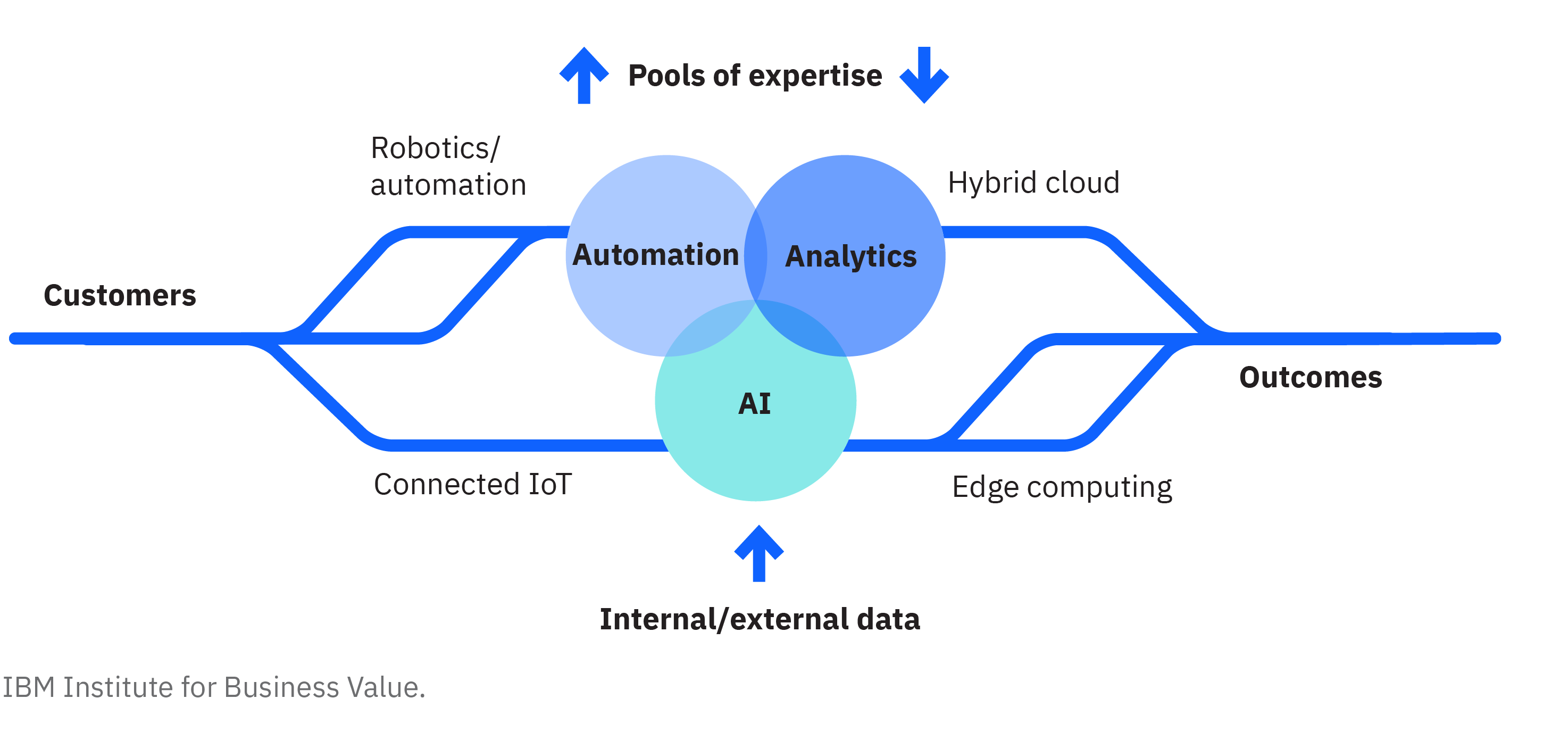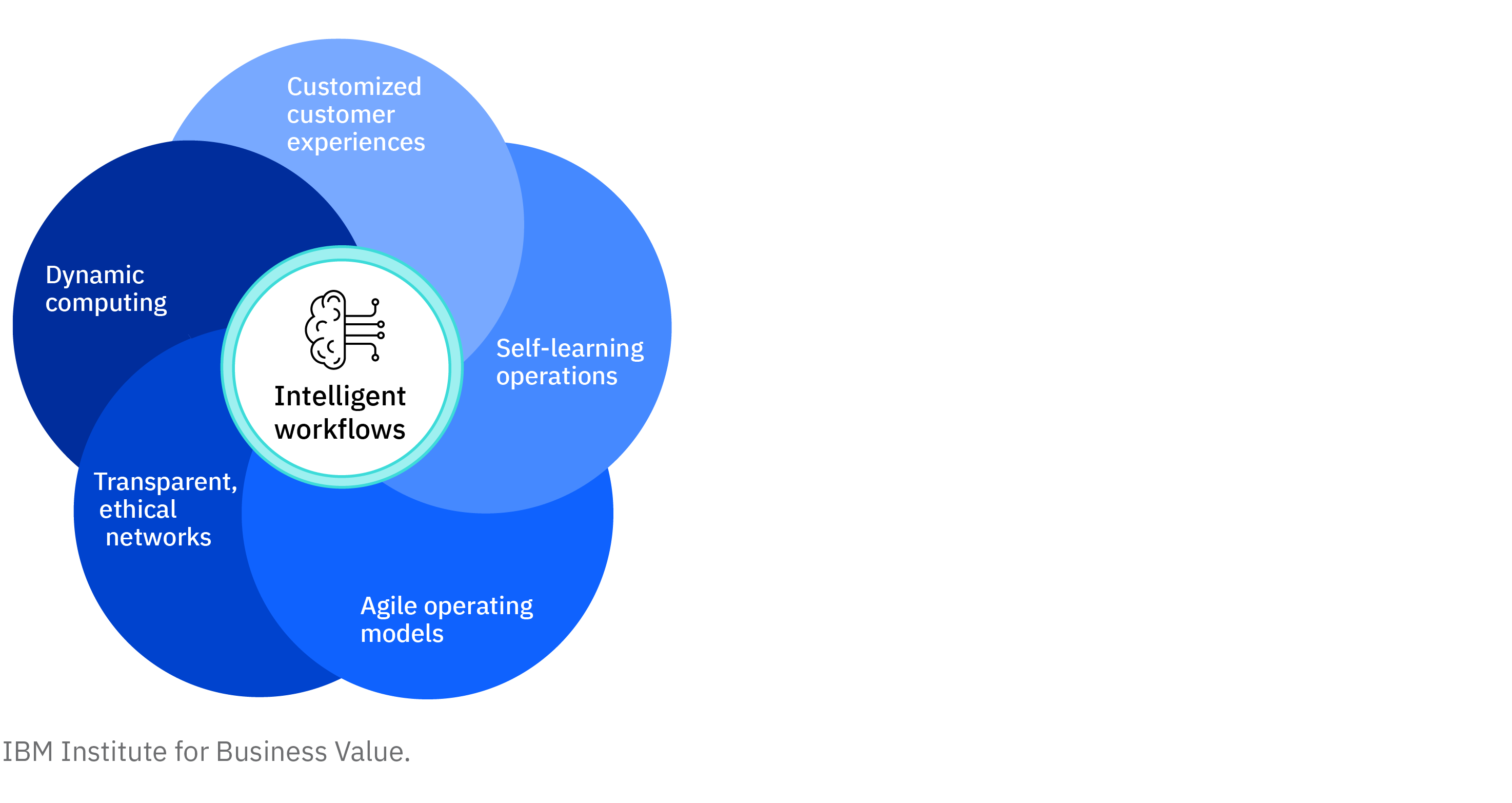Building supply chain resiliency with AI-driven workflows
The pandemic has forever changed supply chains, and organizations need to step up their game. This means being more dynamic, responsive, and resilient, as well as more interconnected to their external ecosystems and internal processes.
A “smarter” supply chain that uses intelligent workflows fueled by data-driven decisions is a new approach. It’s an effective, flexible proposition, but one that requires a strong organizational culture of innovation, discernment of priorities, and laser-sharp focus on beneficial initiatives. Fortunately, we’ve identified organizational mentors who can show us how it’s done.
Over the past three years, supply chain Innovators report 34% more revenue growth and 326% more profitability than their peers.
In a recent IBV survey, we asked 2,000 supply chain executives around the world to rank their organizations’ innovation levels compared to those of competitors and peers. About 10% of respondents, a group we call—appropriately—the Innovators, significantly outperforms the others. Over the past three years, Innovators report 34% more revenue growth and 326% more profitability than their peers. In this report, we’ll explore what these supply chain stars do differently, where they are innovating more effectively than their peers, and what their examples reveal about adapting to challenging times.
Intelligent workflows fuel responsive supply chains
Intelligent workflows are AI-driven, embrace automation where possible, and facilitate horizontal integration and adjustments across functions, providing 360-degree visibility of the supply chain and potential disruptions. Intelligent workflows also support the critical digital platform of control tower visibility—essentially a personalized, connected command center of data, key business metrics, and events across the supply chain. Control towers also fuel collaboration between supply chains and their customers, facilitating efficiency when tackling recurring challenges.
Intelligent workflows can narrow the gap between the anticipated and the unimaginable.
By improving reliability and reducing risks, intelligent workflows can help companies address dilemmas—workforce dislocation, supply chain challenges, and customer service disruptions—caused by the pandemic or other crises. As we move forward, it’s tough to predict the parameters of a post-pandemic world. But intelligent workflows can help build a smarter, more resilient global supply chain and narrow the gap between the unimaginable and the anticipated.
AI, analytics, and automation help companies anticipate and react to disruption

Intelligent workflows are the sum of their parts—specifically, components of exponential technology and automation. Both Innovators and their peers report similar investments and expectations related to robotics and automation, underscoring the across-the-board appeal of that capability. However, in all other exponential technologies, Innovators lead the way. For example, Innovators anticipate investments in AI to run 30% higher than other supply chain organizations, and 31% higher in edge computing.
Innovators anticipate leveraging automated processes and self-learning software 53% more often than other organizations.
Given their position on the “bleeding edge” of applying technology to strategic workflows, Innovators are more optimistic than their peers that these investments will be profitable, especially related to IoT, AI, cloud, and edge computing. Also, Innovators significantly outperform their competitors in responsiveness, agility, and productivity, all game-changing factors that build resilience and influence their confidence in configuring and executing operations. In essence, Innovators are constructing workflows that provide near-instant insights that enable fluid, dynamic workflows, and workforce aptitude. They expect that the equity invested, both sweat and financial, will pay off.
The supply chain of the future
Intelligent workflows ultimately generate value by reimagining the way work is done, adding AI and automation to everyday tasks, insights, responses, and actions. Intelligent workflows serve as the “center of gravity” to your supply chain, sitting at the nexus of five supply chain trends that can power responsiveness and flexibility. As you’ll see, Innovators are at the vanguard of adopting these trends.
Five interconnected supply chain trends
 Learn how smart supply chains can make your organization more responsive and resilient in the face of ongoing disruption.
Learn how smart supply chains can make your organization more responsive and resilient in the face of ongoing disruption.
Meet the authors
Jonathan Wright, Managing Partner, Supply Chain and Finance Transformation, Sustainability, IBMJeanette Barlow, Vice President, Strategy & Offering Management, Sterling Supply Chain, IBM
Download report translations
Originally published 16 November 2020


